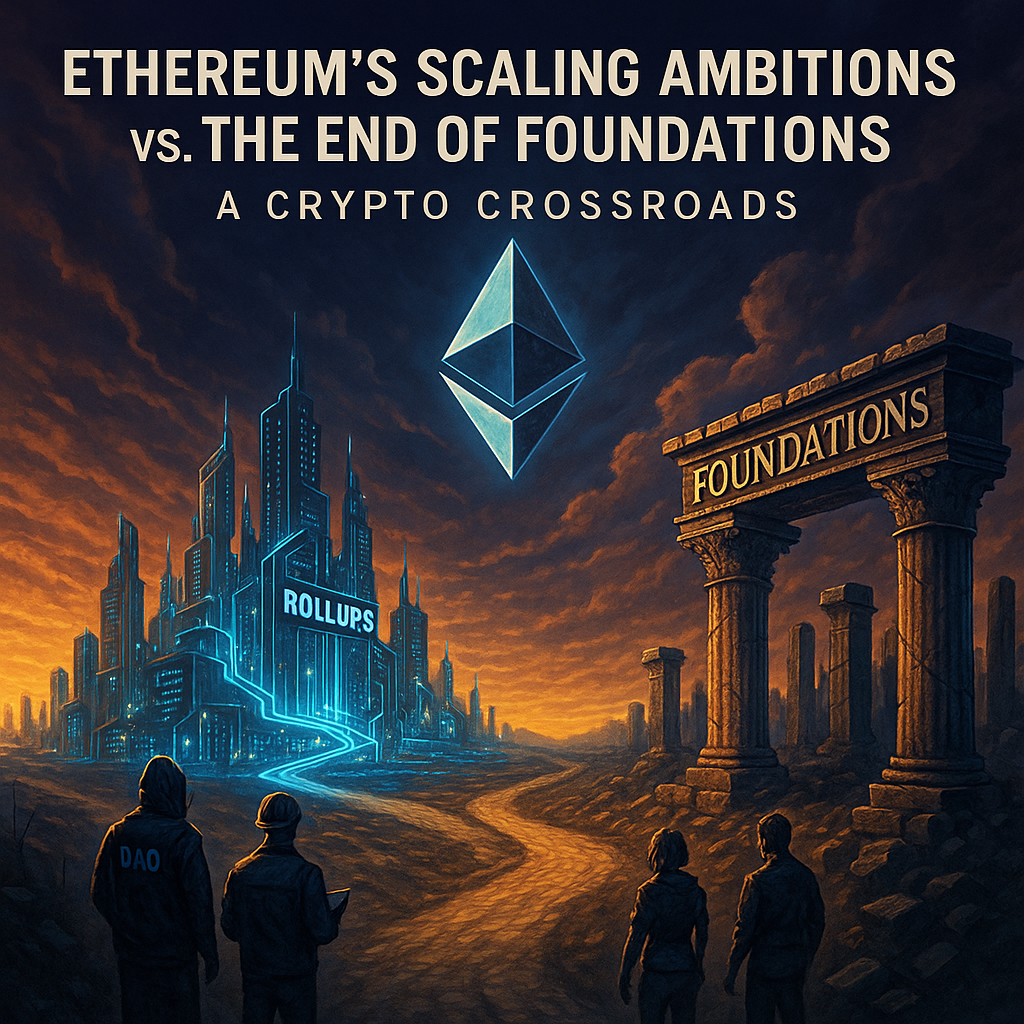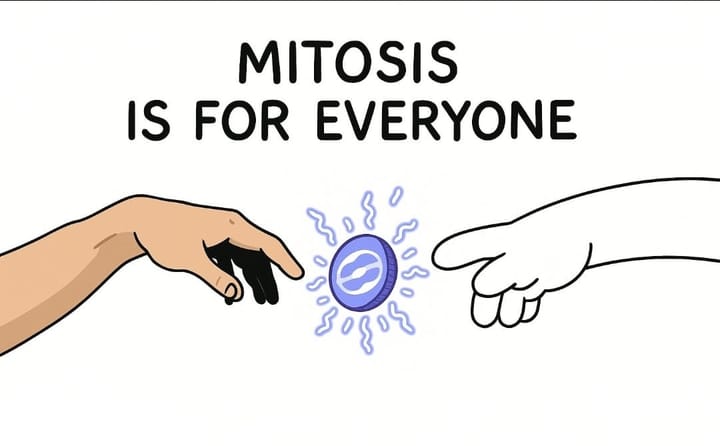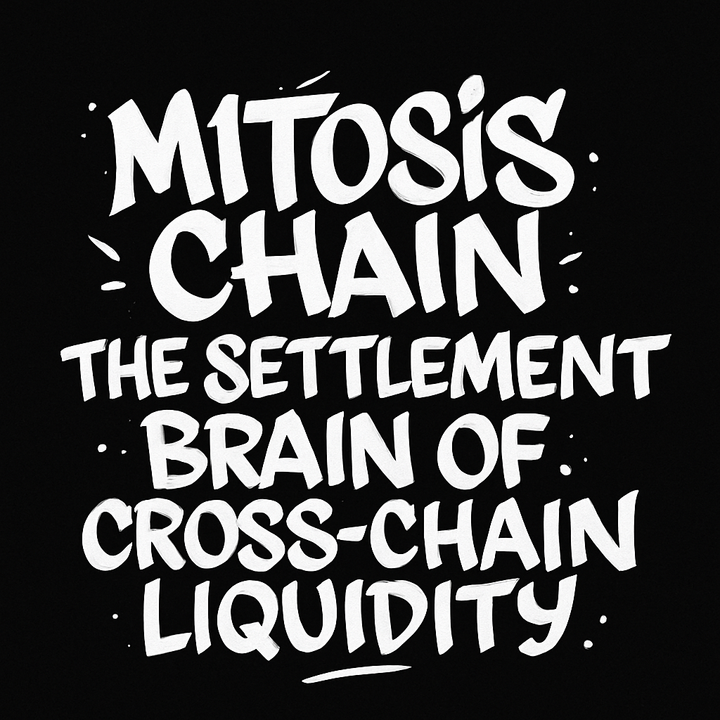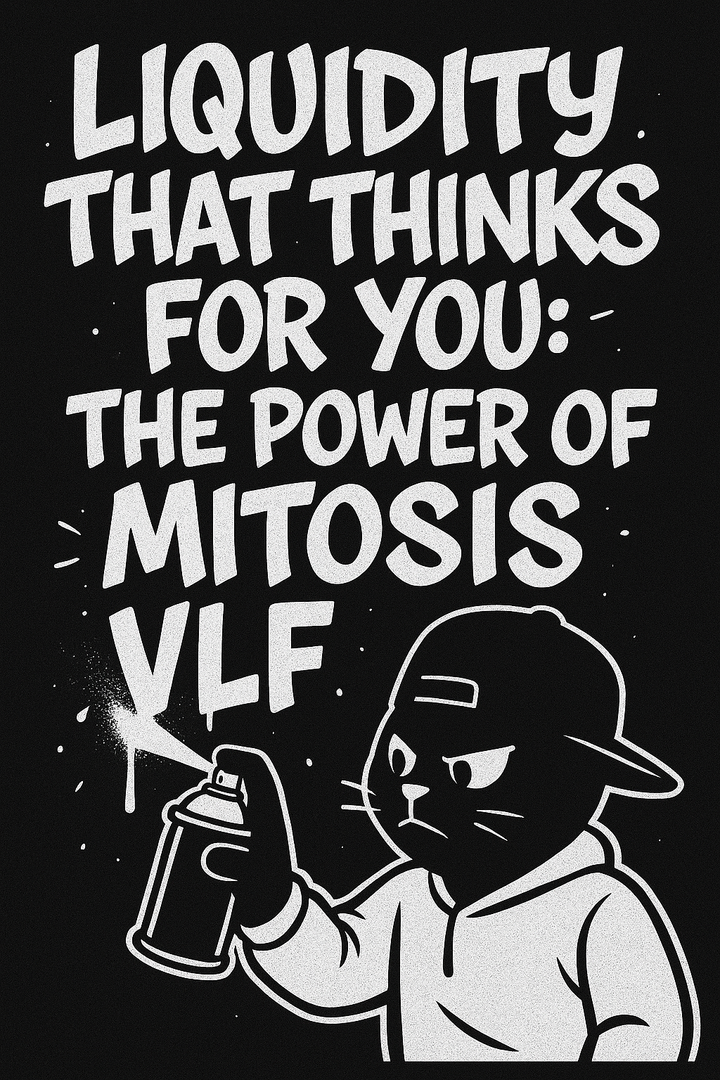Ethereum’s Scaling Ambitions vs. the End of Foundations: A Crypto Crossroads

Ethereum, the leading smart contract platform, is undergoing a quiet revolution. Some hours ago, the Ethereum Foundation (EF) announced a major restructuring—cutting grants, disbanding its research team, and forming a lean “Protocol” group to accelerate L1 development. On the other hand Ethereum core dev Justin Drake unveiled plans for native L1 rollups, signaling a deeper integration of Layer 2s into Ethereum’s base protocol.
But these changes are unfolding against a broader ideological clash. Venture capital firm a16z is calling for the end of the foundation model altogether, arguing that Ethereum’s decentralized governance is inefficient, lacks accountability, and slows progress. Their provocative thesis: company-led models, incentivized by profit and governed with on-chain transparency, are the future of crypto infrastructure.
This article unravel Ethereum’s pivot, a16z’s critiques, and the high-stakes battle over how Web3 should be governed—from foundations and DAOs to potentially corporate-run networks.
The Ethereum Foundation's Restructuring: A Tactical Reset
The Ethereum Foundation quietly unveiled major organizational changes:
- The research team was disbanded, including key figures behind Ethereum’s cryptographic breakthroughs.
- The EF will no longer issue new grants, redirecting resources to internal core development.
- A smaller, newly formed “Protocol” team, including Vitalik Buterin and Justin Drake, will lead Ethereum’s L1 evolution.
The stated goal? Greater efficiency, focus on shipping, and a more agile response to competitive pressures.
Critics saw it differently. Péter Szilágyi, a long-time Ethereum core developer, announced his departure in protest, tweeting:
“This is where the word ‘decentralized’ was quietly, forever removed from #Ethereum’s roadmap.”
Whether you view it as pragmatism or betrayal, the restructuring reflects deep tensions between Ethereum’s ideals and its execution realities
Native L1 Rollups: Ethereum’s Big Bet
Some weeks ago, Justin Drake proposed a bold upgrade path: native L1 rollups—integrated directly into Ethereum’s base protocol
Currently, L2s like Arbitrum and Optimism settle on Ethereum but operate as separate systems. Native rollups would:
- Standardize settlement, eliminating fragmented sequencer architectures.
- Improve data availability, reducing reliance on third-party DA layers.
- Unify security models, countering L2 fragmentation and MEV games.
Drake envisions a future where Ethereum offers "native sequencing, settlement, and bridging", making rollups part of the protocol itself (VitalikEthLimo). This design counters vertically integrated ecosystems like Solana or app-chain models like Cosmos, aiming to preserve Ethereum’s modular, interoperable design while streamlining UX and scalability.
a16z’s Thesis: The End of Foundations?
Complementing this backdrop, a16z published a bombshell critique: "The End of Foundations." The core argument? Foundations like the EF are:
- Inefficient: Lacking market incentives to prioritize usability or growth.
- Unaccountable: Few feedback loops, unclear governance, and opaque funding decisions.
- Slow to act: Bureaucratic and consensus-driven, often delaying urgent upgrades.
Citing Solana's performance and StarkWare’s private sector efficiency, a16z questions whether the non-profit model can keep up with hypercompetitive ecosystems where billions are at stake.
Proposed Alternatives: Company-Led Models
To replace or supplement foundation-driven governance, a16z outlines a set of company-led alternatives—designed to maintain decentralization while aligning incentives and increasing agility:
- Public Benefit Corporations (PBCs): Blend profit with mission-oriented goals, like network development.
- Network Revenue Sharing: DAOs distribute protocol revenue (e.g., fees) to incentivized contributors.
- Milestone-Vesting Tokens: Token allocations unlock as development milestones (e.g., upgrade rollouts) are achieved.
- Decentralized Unincorporated Nonprofit Associations (DUNAs): Legal wrappers (e.g., in Wyoming) allow DAOs to own assets and contract while preserving on-chain governance.
- Cybernetic Organization (BORG) Tooling: On-chain, transparent governance systems reduce reliance on opaque foundation decisions.
These models aim to merge market discipline with DAO transparency, giving contributors skin in the game while ensuring community oversight.
Implications for the Ethereum Foundation
a16z’s thesis directly challenges the EF’s role as Ethereum’s steward. While acknowledging the EF’s historic contributions, they question whether companies like ConsenSys might be better suited to ship products, build dev tooling, and maintain infrastructure (a16zcrypto).
The EF’s restructuring appears partly reactive—streamlining operations, forming a focused team, and shifting toward shipping-focused execution. However, if Ethereum’s pace doesn’t improve, or if decentralization concerns grow, a16z’s call for company-led or DAO-driven alternatives may gain traction.
Community Reactions: Polarization and Pushback
The debate has split Ethereum’s community:
- Sebastian Bürgel (Gnosis DAO) defended stronger leadership, calling the previous model “kumbaya decision-making.”
Péter Szilágyi warned that the EF’s streamlining sacrifices decentralization:
“This is where the word ‘decentralised’ was quietly, forever removed…” (X)
Foundation vs. Company-Led Models: A Comparative Look
| Aspect | Foundation Model | Company-Led Model |
|---|---|---|
| Incentive Alignment | Patronage-based; often misaligned short-term incentives (a16zcrypto). | Milestone-vesting, profit-driven alignment; long-term commitment (a16zcrypto). |
| Accountability | Limited feedback loops; potential for shadow governance (a16zcrypto). | Market discipline, DAO contracts, on-chain tooling (a16zcrypto). |
| Operational Efficiency | Siloed and legally constrained; grant inefficiencies (a16zcrypto). | Integrated ops with flexibility (PBCs, DUNAs) (a16zcrypto). |
| Centralization Risk | Gatekeeping by foundation leadership (a16zcrypto). | Potential corporate capture, mitigated via strong DAO oversight (a16zcrypto). |
Synthesis and Outlook
Ethereum stands at a pivotal crossroads. The EF’s restructuring, Drake’s native rollup roadmap, and a16z’s critique form a three-pronged tension between:
- Execution speed
- Governance legitimacy
- Community trust
The EF’s new Protocol team aims to ship upgrades like Pectra and Fusaka, which will be critical for enabling native rollups. If successful, Ethereum could consolidate its L1/L2 ecosystem, countering competition from Solana and app-chain platforms.
But failure—whether through delays, dev attrition, or coordination issues—could bolster arguments for corporate or DAO-led alternatives. The future may lie in hybrid governance: EF-led L1 development, with ecosystem growth driven by incentivized DAOs, DUNAs, and BORG tooling.
Strategic Recommendations
For the Ethereum Foundation:
- Radical Transparency: Publish clear roadmaps, budget breakdowns, and technical progress updates.
- L1-L2 Synergy: Standardize L2 interfaces, involve rollup teams in protocol decisions.
- Smarter Grants: Tie funding to milestone-based, integrated contributions.
- Governance Innovation: Pilot DAO tooling or tokenholder input without compromising security.
For L2 Developers:
- Scenario Planning: Model the impact of native rollups on your stack and tokenomics.
- Upstream Contribution: Participate in L1 discussions to shape compatible designs.
- Differentiate or Die: Build unique applications and UX to stand out from commoditized rollups.
For Investors:
- Monitor Governance Trends: Company-led transitions affect token accrual and influence structures.
- Analyze L1/L2 Value Flows: Understand where value migrates in a native rollup world.
For Users:
- Demand Better UX: Push for wallet simplicity, cheaper fees, and seamless L2 bridging.
- Stay Informed: Track changes in L1/L2 security and governance as protocols evolve.
- Engage Where Possible: Participate in DAOs and protocol discussions, even if ETH governance is limited.
Conclusion
Ethereum is entering one of the most pivotal chapters in its history. The convergence of the EF’s internal restructuring, Justin Drake’s push for native L1 rollups, and a16z’s challenge to the nonprofit model marks a profound turning point—not just for Ethereum, but for the future of decentralized governance itself. This moment tests whether Ethereum can scale without splintering, coordinate without centralizing, and innovate without abandoning its founding principles.
The road ahead demands more than technical upgrades. It requires a governance model that earns trust through transparency, aligns incentives without compromising decentralization, and evolves without losing legitimacy.
In a world where protocols compete not just on throughput but on philosophy, Ethereum’s answer to the end of foundations may determine the next era of the internet. The challenge is not simply to scale Ethereum—it is to scale it while keeping the soul of Web3 intact.
References
[1]a16z crypto "The end of the foundation era in crypto". a16z, https://a16zcrypto.com/posts/article/end-foundation-era-crypto/
[2]. Cointelegraph, "What are native rollups? Full guide to Ethereum's latest innovation," https://cointelegraph.com/magazine/dummies-quide-to-native-rollups-12s-as-secure-as-ethereum-itself/
[3]"Possible futures of the Ethereum protocol, part 2: The Surge," Vitalik.eth.limo, https://vitalik.eth.limo/general/2024/10/17/futures2.html
[4]"Fusaka: Ethereum’s Plan to Quadruple Its Capacity" Bitsacard, https://bitsacard.com/blog/en/fusaka-ethereums-plan-to-quadruple-its-capacity/
[5]"DUNA: A Threat to Decentralization and Freedom in Web3 Governance" swenldn, https://swenldn.substack.com/p/duna-a-threat-to-decentralization#:~:text=The%20Decentralized%20Unincorporated%20Nonprofit%20Association%20(DUNA)%20is%20a%20legal%20framework,liability%20protection%2C%20and%20governance%20structures
[6]"Borgs: A New Cryptolegal Framework for DAO-Adjacent Entities" howdoibusiness https://www.howdoibusiness.com/articles/assimilating-the-borg-a-new-cryptolegal-framework-for-dao-adjacent-entities



Comments ()